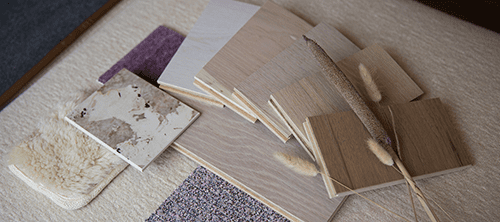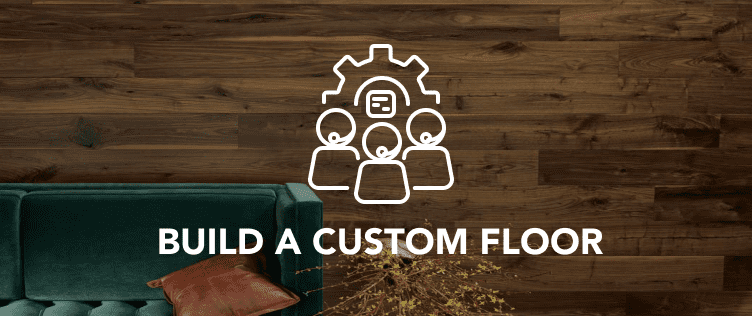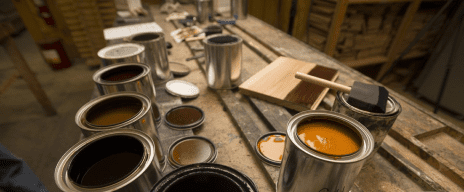An Interview with Maine Home+Design’s Joshua Bodwell

Wide Plank Floors Rise With The Tide
Joshua Bodwell is a Maine writer and the Associate Editor of Maine HOME+DESIGN, a magazine dedicated to “capturing the interiors, exteriors, and heart of Maine homes.” From Revolutionary War-era farmhouses to rehabbed industrial lofts in downtown Portland, Josh Bodwell has seen and written about them all. The Surface caught up with the ever-busy Bodwell to get his thoughts on wide plank flooring.
You’ve seen a lot of great homes in your position as associate editor at Maine HOME + DESIGN, have you noticed the increased use of wide plank flooring?
Wood flooring is almost ubiquitous in great Maine homes. In a state that is so valued for its forests and connection to the outdoors, it is not surprising. Many Maine designers—whether they are architects or interior designers—use wood flooring to re-knit a home to the land beyond its walls.
Why do you think wide plank flooring is becoming so popular?
I think the rise in wide plank flooring’s popularity can be attributed to several factors.
First, I would note the obvious: it looks great. From a design standpoint, the long, continuous lines achievable with wide planks can be used as a room’s key design element.
Next, I would have to speculate that the power of nostalgia plays a big part when homeowners in Maine—whether they are year-round residents or second home owners—select this type of flooring for their project. This theory is based upon the dozens of conversations Maine HOME+DESIGN staff has had with countless people in the home building and design field. We hear time and again that there is just something so warm and memorable about wide plank flooring—I personally always relate it to the wide pine floors in my grandparent’s 150-year-old house.
Lastly, in a time when “sustainability” is on the tips of many tongues, using pine flooring that comes from forests that are being forested with sustainable practices is very appealing to consumers. Utilizing reclaimed wood for flooring is even better—this is not recycling, but upcycling, by which I mean, taking something that is already made and giving it a new, more valuable and sustainable life.
Statistics show that demand for antique flooring has doubled over the last ten years. Are you seeing more homes with reclaimed wood, antique floors, as well as more recycled or salvaged materials in general?
Yes, we see homes all the time with reclaimed wood, antique floors. In fact, two weeks ago I was visiting with the wildly talented furniture maker Eric Ritter of Ritter Furniture and we spent a long time talking about the reclaimed wood floors that he had laid in his 175-year-old colonial farmhouse.
Recycled and salvaged materials are constantly popping up in Maine homes. I think the state has a long history of this sort of smart frugality. These days, there are reasons beyond frugality to use such materials. Again, as I stated previously, consumers are becoming more savvy about where the components of their home come from, how they are manufactured, and how they impact the earth. Antique flooring scores high with the U.S. Green Building Council’s Leadership in Energy and Environmental Design rating system, or LEED, and many people give serious credence to their advice.
What kind of aesthetic do you find wide plank flooring giving homes on the coast? In the interior of the state?
As I said earlier, wide plank flooring seems to be a perfect fit for the Maine design vernacular—in the interior of the state, it offers echoes of old barns and farmhouses; along the coast, it epitomizes our ideals of the perfect beachside cottage.
The aesthetics possible with wood flooring are, as I also said earlier, limitless. A few examples of homes we’ve featured in Maine HOME+DESIGN come to mind:
Back in May, 2007 we featured a home in a piece entitled “Island Elegance.” In that home (which included Douglas fir walls and ceilings) the antique southern yellow pine floors gave the small island home an added level of sophistication.
In June of that same year we featured an early 1880s farmhouse in South Freeport where the homeowner (who is also an interior designer) picked old wide-pine-board floors and gave the space an almost French countryside aesthetic.
Lastly, a Goose Rocks Beach home featured in our issue, “Land of Leisure”, has gorgeous wide pine floors throughout. While some could argue that pine isn’t “strong” enough to withstand the wear and tear of sand-covered feet, the homeowner and architect felt strongly that the natural aging of the wide pine would add beautifully to the beach cottage-meets-farmhouse aesthetic that they were aiming for.





